On February 18, 1930, Clyde Tombaugh discovered Pluto after nearly a year of searching.
By the 1840s, astronomers had discovered the first seven planets from the sun. But around that time, mathematician Urbain Le Verrier predicted the location of then-undiscovered Neptune after studying irregularities in Uranus’ orbit. His predictions were correct and Neptune was discovered in 1846.
60 years later, Percival Lowell suggested that there was a ninth planet causing similar changes to the orbits of Uranus and Neptune. He dubbed it “Planet X” and launched an extensive search at his Lowell Observatory in Flagstaff, Arizona. Lowell and astronomer William H. Pickering suggested several possible coordinates for Planet X, but never found it. Though they did capture a pair of faint images of Pluto in 1915, they didn’t realize it. In fact, it was later discovered that there were 14 observations of Pluto, dating back to 1909, before it was officially discovered.
After Lowell’s death in 1916, his widow embarked on a 10-year legal battle with the observatory. The search for Planet X didn’t resume until 1929. At that time, the job of locating the mystery planet was assigned to 23-year-old Clyde Tombaugh. To do this, Tombaugh had to capture several images of the night sky and then study them to see if objects moved. After almost a year of this, he found a possible moving object on February 18, 1930. Tombaugh discovered Pluto.
Once the discovery was made public, the Lowell Observatory was flooded with suggestions to name the new planet. (As the location of the discovery, they had the honor of naming it.) Among those who submitted ideas was 11-year-old Venetia Burney, who suggested the newest planet be named Pluto, after the god of the underworld. By May, they narrowed it down to three options – Pluto, Minerva, and Cronus. Pluto was selected unanimously.
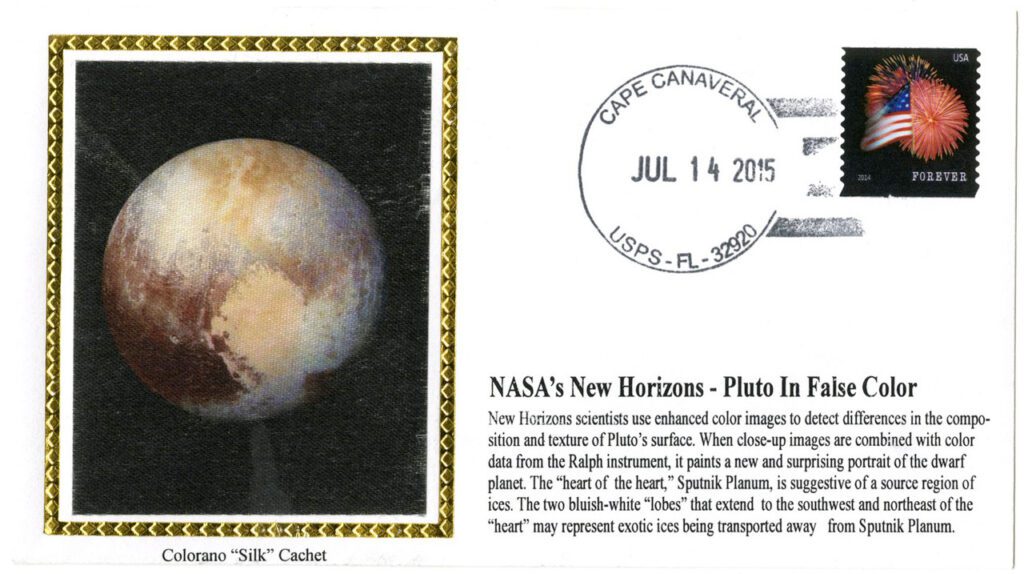
Over the years, some doubted if Pluto truly was the Planet X that Lowell suggested, as the planet was much smaller than his calculations would have suggested. Additionally, objects of similar size were discovered in the same area of space, known as the Kuiper Belt. This led some to question if Pluto truly was a planet. After it was determined that Pluto did not meet the International Astronomical Union’s definition of a planet, it was downgraded to a dwarf planet in 2006.
How a postage stamp inspired a mission to Pluto
Scientists had long dreamed of exploring Pluto. It was the issuing of a postage stamp that served as a rallying point to launch a mission to the most distant planet in our solar system.
The Voyager mission did its final flyby of Neptune in 1989. Two years later, the USPS issued a set of stamps (US #2568-77) featuring each of the planets with the spacecraft that explored it. But one stamp stood out. Picturing a lone planet, it proclaimed, “Pluto Not Yet Explored.” The statement was taken as a challenge.
NASA created the New Horizons mission with plans to explore Pluto, its moons, and objects beyond them. The mission launched in January 2006, just seven months before Pluto was reclassified as a dwarf planet. The fastest spacecraft ever built, New Horizons traveled to Pluto at an astounding 96,000 miles per hour.
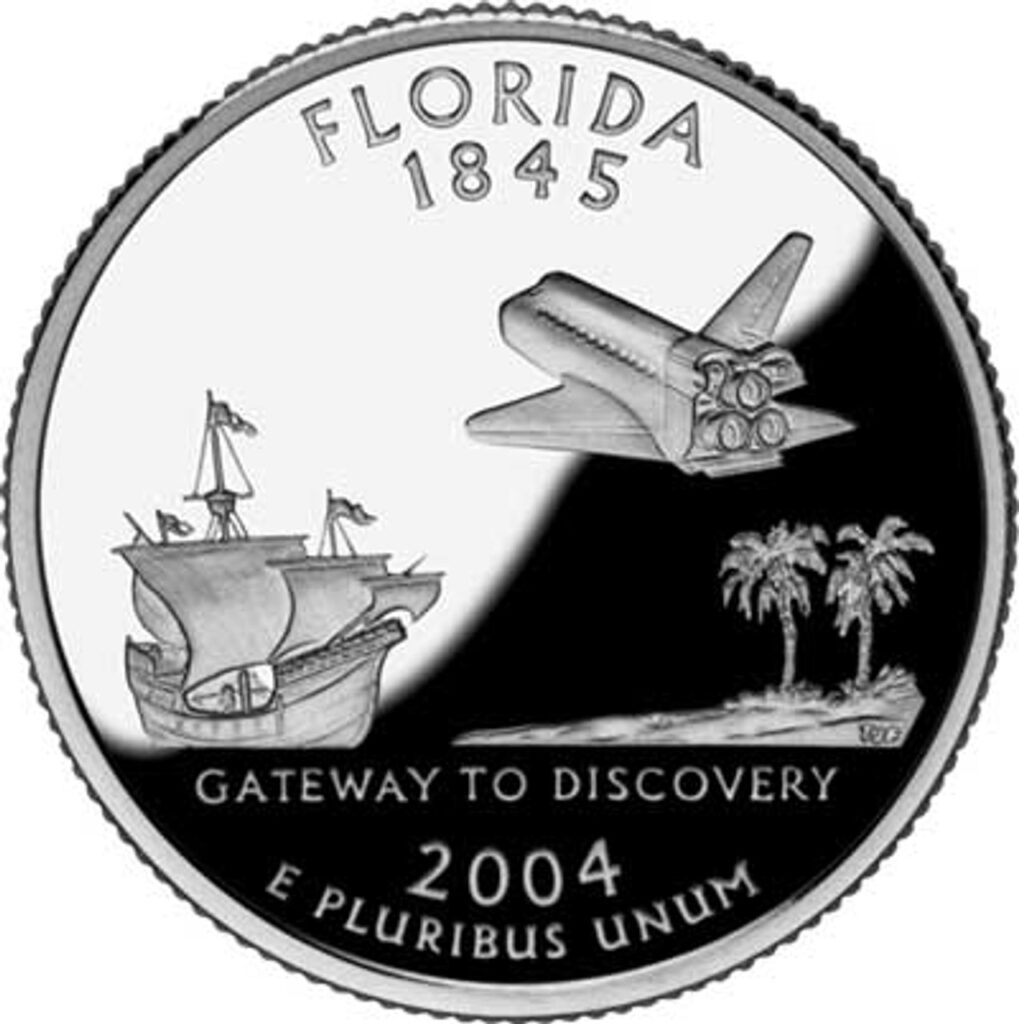
The probe carried a number of artifacts into space. These include a US flag, a Florida state quarter (which honors space exploration), and the 1991 stamp that inspired the mission. New Horizons reached Pluto on July 14, 2015. The same day, the probe began transmitting back the first batch of data, including the first up-close images we have ever seen of Pluto.
Journeying more than 2.6 billion miles from Earth, the probe transmitted data at a very slow rate, so scientists continued to receive new data about Pluto for more than a year. The mission allowed them to calculate Pluto’s exact diameter, view mountains, plains, and ice caps, and see the planet has a reddish hue from the compounds in its atmosphere. They also found that Pluto’s atmosphere is being blown into space by solar winds, creating a tail of plasma. Because of Pluto’s nearly round shape, scientists suspect the now-frozen planet once had a warm subsurface and a liquid ocean.
All of this new data revealed that Pluto has been changing for much of its existence, contrary to what scientists have long believed. The images showed curious cone-shaped mountains with craters in the center and a potential nitrogen-spewing ice volcano, the only one of its kind to be discovered in our solar system.
After completing its mission to Pluto, New Horizons continued on to explore objects in the Kuiper Belt. As of 2025, the probe has traveled about 5.67 billion miles from Earth!
Fun fact – In July 2016, the 1991 “Pluto Not Yet Explored” stamp was certified by Guinness World Records as the farthest-traveled stamp – over 3 billion miles at that time!
| FREE printable This Day in History album pages Download a PDF of today’s article. Get a binder or other supplies to create your This Day in History album. |
Discover what else happened on This Day in History.

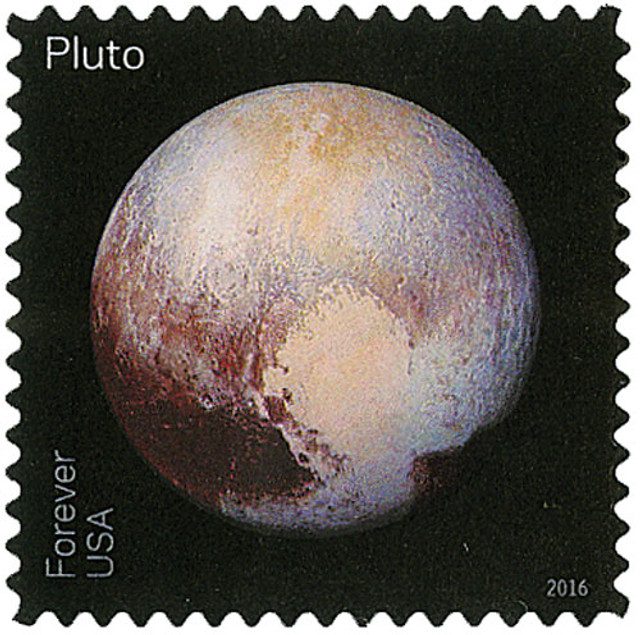
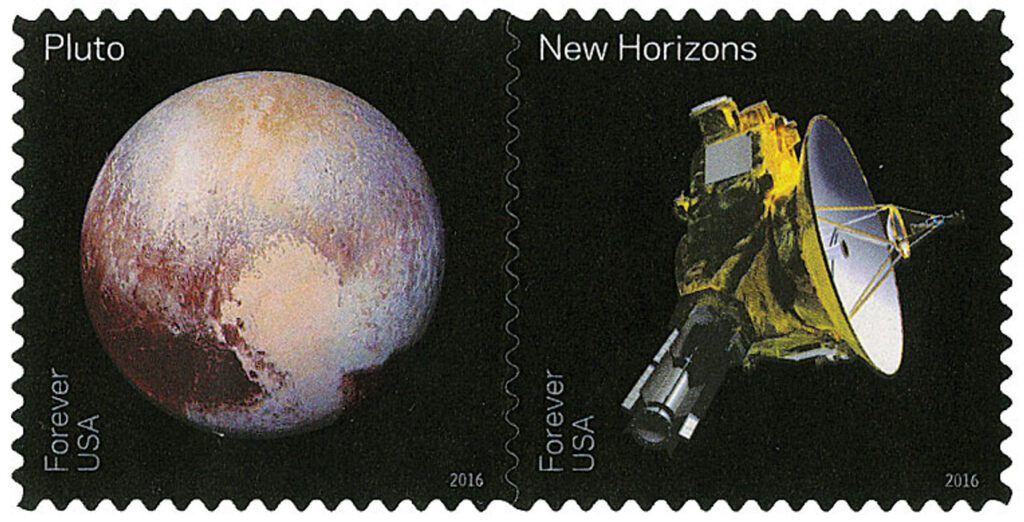
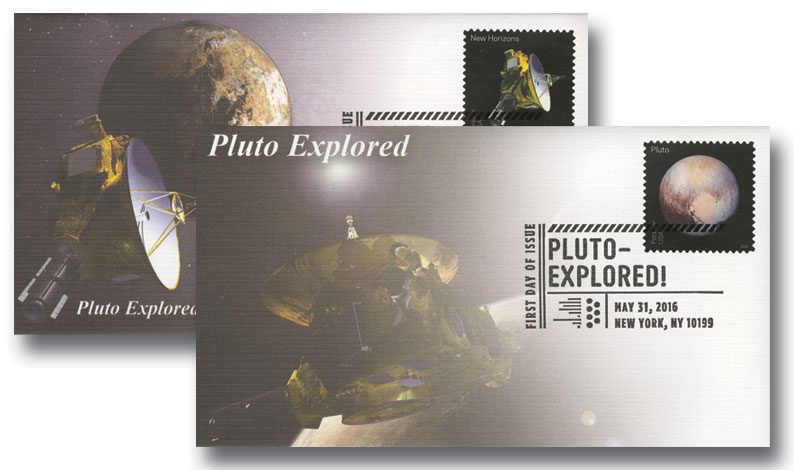
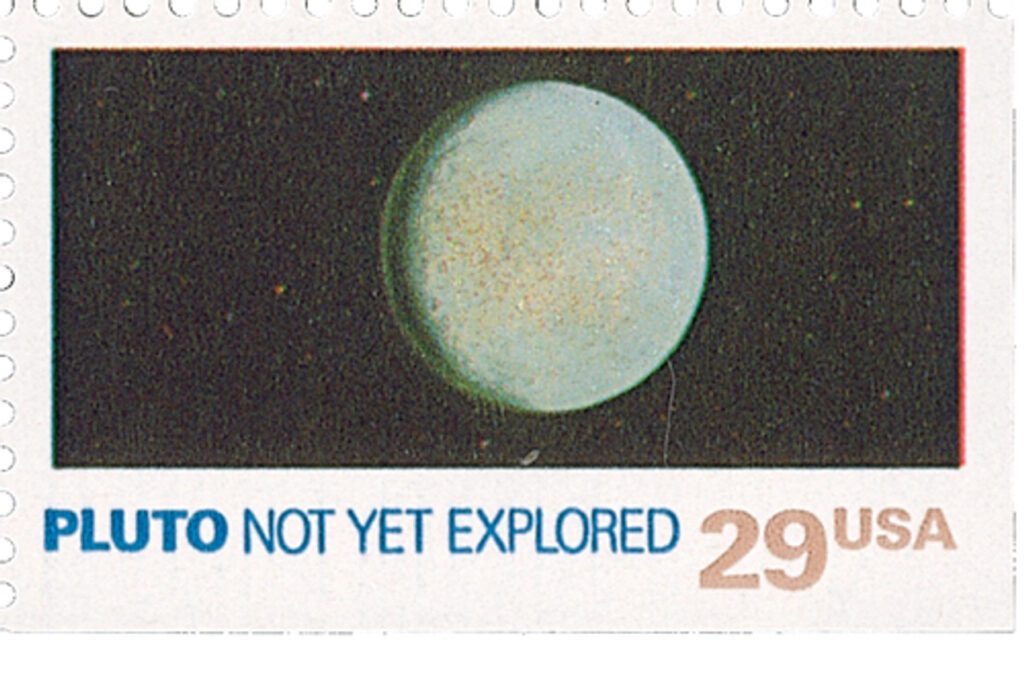

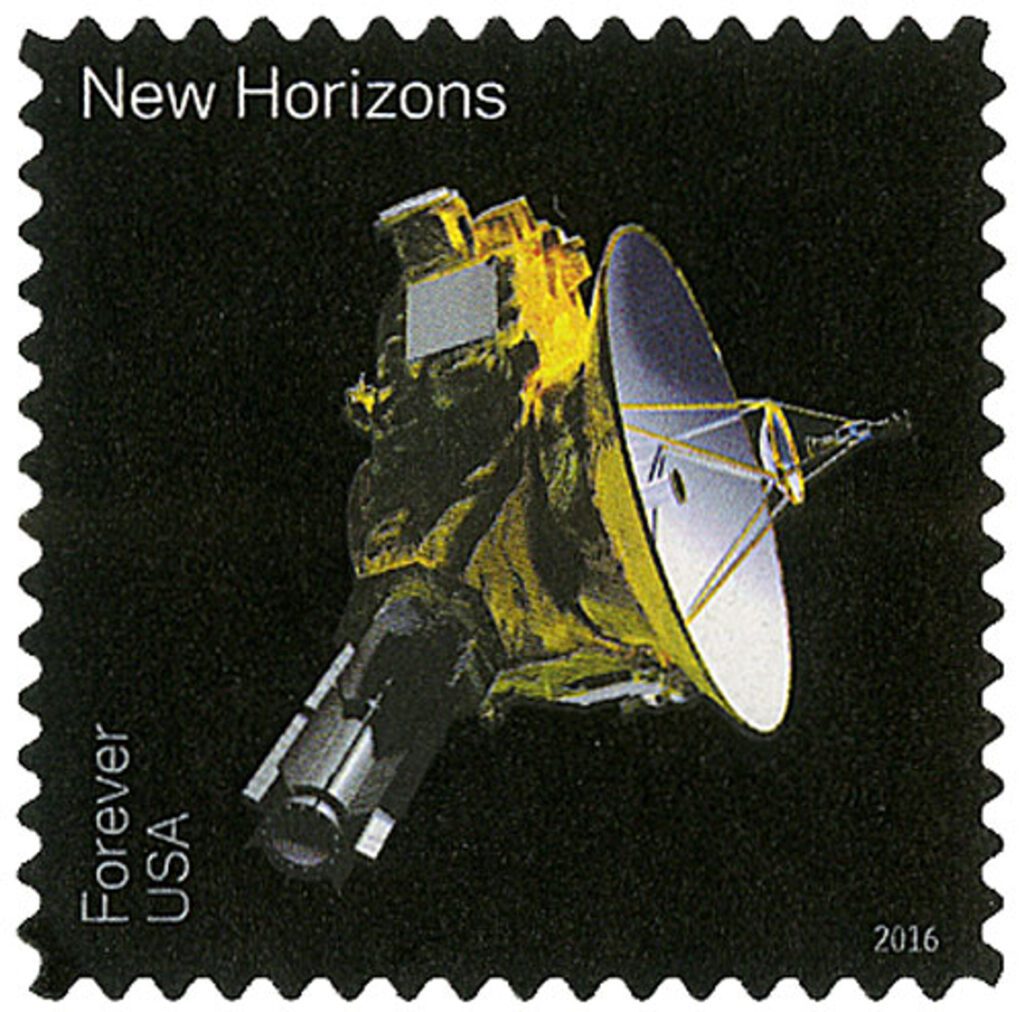
it should have been ninth planet.
Pluto, the god of the underworld, Pluto, the planet and Pluto the dog. They are probably all related to each other.
Very funny Noah…..might I add, Since it’s orbit was different and so far away it was considered out of this world, a world away or just a blip on the screen.
The search resumed in 1992?
Good article about the achievements of a great nation. I did not realize the stamp issuance 1991 gave impetus to our eventual exploration of this far away world.
Good information.
As a product of the emphasis on science after Sputnick, this is a great article. I hope more about space will continue. So interesting to see how a stamp can inspire us to spend $ 600,000.000 to explore Pluto.
THanks Mystic
That’s six hundred million dollars.
PLUTO takes 248 Earth Years to go around the Sun. One day on Pluto is equal to 6 an d half days on Earth. Pluto`s temperature is 33 KELVIN ( i.e. MINUS 230 degrees C ) . GRAVITY : If you weigh 60 kgs on Earth, you would weigh only 4 kgs on Pluto. In September 2016, Scientists have found evidence of throling organic macro molecules that may be ingredients for emergence of life.. Name PLUTO was proposed by Venetia Burney, an eleven year old school girl from Oxford England, She received an award of FIVE BRITISH POUNDS ( equivalent to U.S. $ 500 in today`s terms. ) PLUTO was so named on May 25, 1930. PLUTO means YAMA ( the God of Death) in Indian and Buddhist mythology.. Chinese Japanese , Vietnamese languages also have similar meaning words. Indigenous Peoples God MAORI WHIRO also is a similar meaning word meaning God of Death, Pluto ).
If Pluto was kept as a planet we would have to add a bunch more similarly sized objects also in the Kuiper belt. Some are even larger than Pluto. They did the right thing to change it’s classification and it’s done nothing to reduce it’s scientific interest and popularity. After all, it didn’t get smaller or go away, in fact the reclass has created a whole new area of study of which Pluto is a part.
There were some other really cool stamps that year including the planet series and the ground breaking heat sensitive eclipse stamps.
Very interesting information that I did not know before reading this article. Thanks, Mystic … you guys are terrific !
I think I just learned more about Pluto than I’ve ever known before! Great job Mystic, keep it up!
Back in the day the comic book writers populated the planets. Mostly colorful humanoids, there were Venusians, Saturnians, Plutonians, etc. They had sports leagues with the Plutonians being good at ice hockey lol.